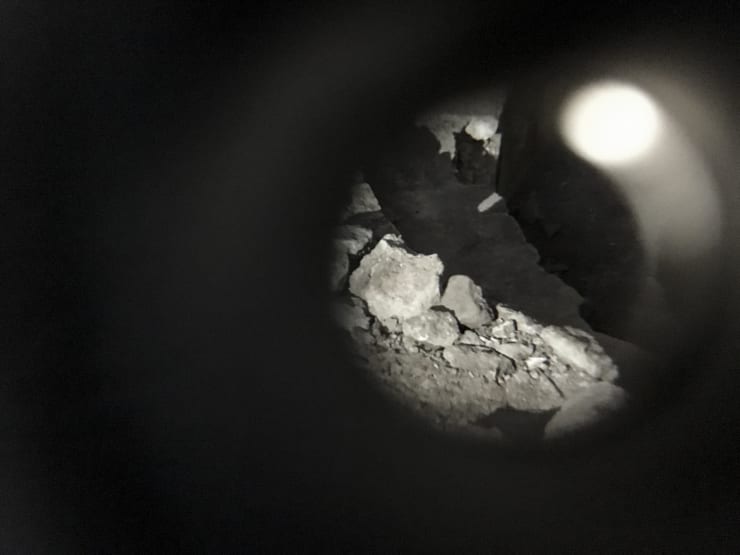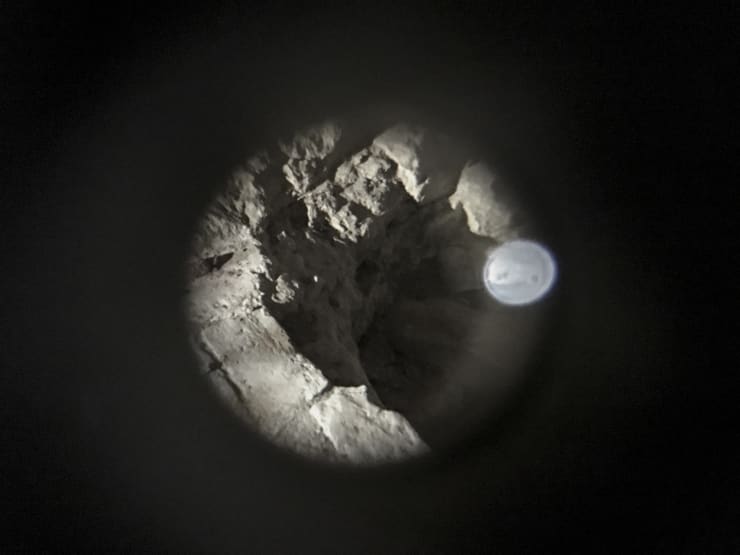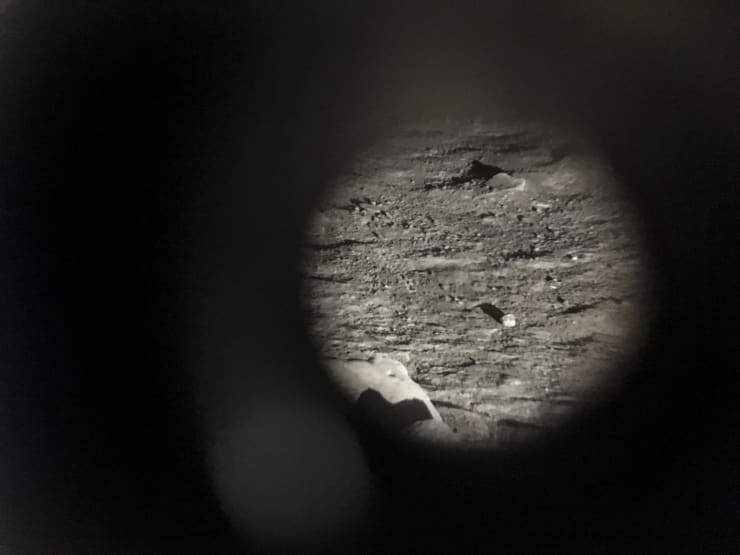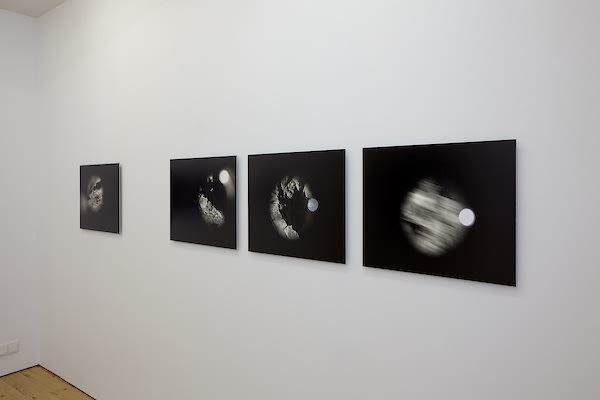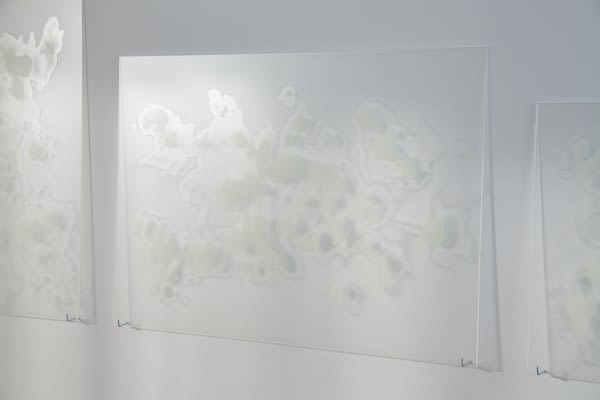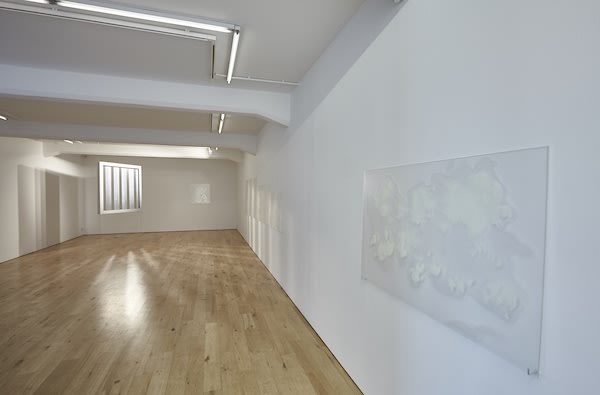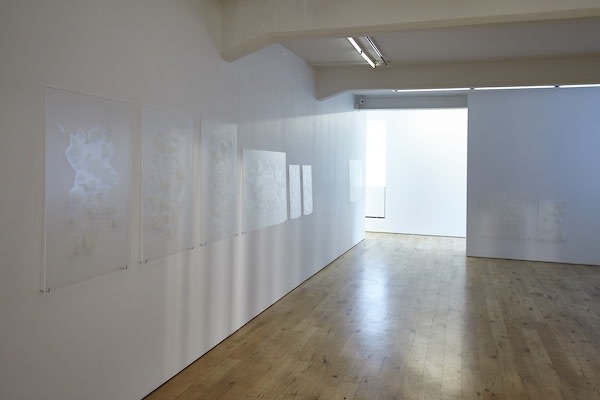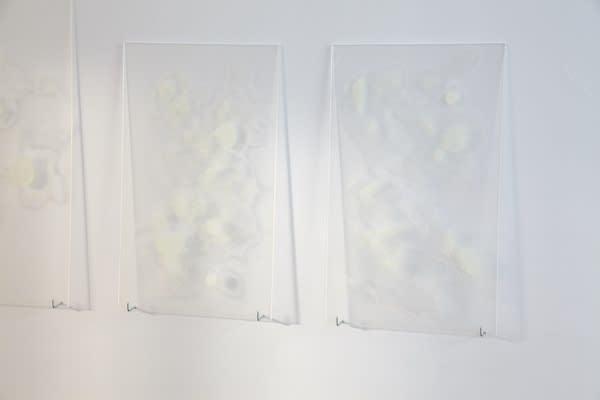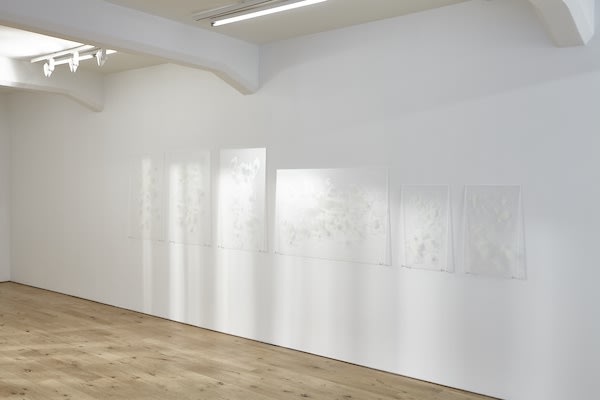Therese Himmer: LEVANIA - Hverfisgallerí
-

Galilean Moons 3, Ed. 1/3, 2018
Archival inkjet print mounted on aluminum / Ljósekta bleksprautuprent á álplötu44 x 59 cm
-

Galilean Moons 6, Ed. 1/3, 2018
Archival inkjet print mounted on aluminum / Ljósekta bleksprautuprent á álplötu44 x 59 cm
-

Galilean Moons 1, Ed. 1/3, 2018
Archival inkjet print mounted on aluminum / Ljósekta bleksprautuprent á álplötu44 x 59 cm
-

Galilean Moons 4, Ed. 1/3, 2018
Archival inkjet print mounted on aluminum / Ljósekta bleksprautuprent á álplötu44 x 59 cm
-

Galilean Moons 5, Ed. 1/3, 2018
Archival inkjet print mounted on aluminum / Ljósekta bleksprautuprent á álplötu44 x 59 cm
-

Galilean Moons 2, Ed. 1/3, 2018
Archival inkjet print mounted on aluminum / Ljósekta bleksprautuprent á álplötu44 x 59 cm
-

Galilean Moons 7, Ed. 1/3, 2018
Archival inkjet print mounted on aluminum / Ljósekta bleksprautuprent á álplötu44 x 59 cm
Levania
Sýningin Levania er fyrsta birtingarmynd lengra verkefnis sem á rætur sínar í skáldsögunni Somnium (eða Draumnum, eins og titillinn var þýddur) eftir Johannes Kepler frá árinu 1608.
Í Somnium birtir Kepler nákvæma lýsingu á því hvernig alheimurinn (og jörðin) gætu litið út séð frá tunglinu og þess vegna er sagan talin grundvallarverk í tunglfræðum. Um leið er hún talin ein fyrsta vísindaskáldsagan.
Skáldsagan ber merki vísindalegra rannsókna, sjálfsævisögunnar og ómengaðs skáldskapar og aðalpersónan er Duracotus, íslenskur drengur. Röð ýmissa atvika lýkur með því að Duracotus kemur til Danmerkur og nemur þar himinfræði undir handleiðslu hins fræga stjörnufræðings Tycho Brahe á dönsku eyjunni Hveðn. Við heimkomuna til Íslands dýpkar hann svo þekkingu sína á stjörnunum enn frekar undir leiðsögn móður sinnar, Fiolxhilde, fjölkunnugrar konu sem sér fyrir sér með sölu jurtalyfja. Hún særir fram blíðlyndan anda utan úr geimnum sem lýsir í smáatriðum fyrir þeim alheimseyjunni Levaniu. Sú frásögn er í raun lýsing Keplers á tunglinu og geimnum (þ. á m. jörðinni), eins og séð frá tunglinu sjálfu.
Í Somnium birtist himinninn, þá sérstaklega tunglið (Levania), sem brennidepill tveggja aðgreindra máta skynjunar og þekkingarsköpunar. Annars vegar er um að ræða hina vísindalegu aðferð, studda tæknilegum búnaði og setta fram af Tycho Brahe, fræðimanni og lærimeistara. Hins vegar er hið dulræna, sem byggir á áþreifanlegri reynslu og fulltrúi þess er móðirin, Fiolxhilde, sem deilir þekkingu kynslóðanna áfram til sonar síns.
Í skáldsögunni er þessum ólíku aðferðum gert jafn hátt undir höfði, hvorug þeirra er utangarðs. Innan Draumsins rúmast fjölbreytt sjónarhorn og margvísleg þekkingarform hlið við hlið, í sameiginlegu rými sem einkennist af innri tengslum og síendurteknum breytingum.
Við fyrstu sýn gæti ljósmyndaröðin Galilean Moons virst birta okkur form plánetanna en í raun eru myndirnar frá rústum stjörnuathugunarstöðvar Tycho Brahe, Stjörnuborg, á eyjunni Hveðn. Þær voru teknar með hjálp lítils Galíleó-stjörnukíkis. Kringlótt linsa kíkisins myndar hringlaga op um katakomburnar, alltumlykjandi myrkrið er í raun aðeins hin örmjóa rönd milli myndavélarlinsunnar og aðdráttarlinsu kíkisins. Þótt við séum í mikilli nánd virðast myndirnar teknar úr mikilli fjarlægð, sjónarhorninu er snúið frá geimnum að jörðinni og skoðunartækninni sjálfri.
Speglað ljós sameinar hin tvö aðskildu listaverk Dormant Echoes og Infinite Transmission. Dormant Echoes er röð óljósra, loftkenndra ímynda úr sjálflýsandi litarkornum sem festar eru milli gagnsærra akrýlplatna og minna á það sem sést í gegnum linsu smásjár. Infinite Transmissions er hins vegar innrömmuð samsetning, mynduð úr þríhyrningum sem speglast og snúast vélrænt. Þríhyrningarnir varpa í eilífri hringrás mjúkri birtu á helming myndanna í Dormant Echoes og vekja litina þannig til lífs. Umhverfisbirtan í galleríinu virkjar hinn helming verksins. Á sama hátt og stjörnur og ský á himnum geta birt okkur stórkostlegar myndanir og furðuverur, breytast sjálflýsandi formin í sífellu frá óhlutbundnu formleysi í kraftmiklar myndir, með reglubundnum sveiflum litarkornanna milli óvirks ástands og geislandi endurskins.
Theresa Himmer
//
Levania
The exhibition Levania is the first expression of a longer project taking its starting point from the novel Somnium (or the Dream as it translates) by Johannes Kepler, written in 1608.
Somnium presents Kepler’s detailed description on what the cosmos (and Earth) might look like if observed from the Moon and is therefore considered a foundational work in the field of lunar astronomy. Simultaneously it is considered one of the first works of science fiction.
Spanning freely from scientific research to autobiography and speculative fiction, the novel Somnium tells the peculiar story of Duracotus, an Icelandic boy. After a series of events, Duracotus arrives in Denmark where he studies the skies with the famed renaissance astronomer Tycho Brahe, on the then Danish island of Hven. Back in Iceland, his knowledge of the constellations expands as he is reunited with his mother Fiolxhilde, a wise-woman who sustains herself by selling herbal mixtures. Through a spiritual ceremony, she summons a gentle, extra-terrestrial daemon who shares a detailed account of the cosmic island of Levania. The portrait of Levania is in fact Kepler’s account of the Moon, and the universe (including Earth) as seen from an inverted, lunar perspective.
In Somnium, the skies and the Moon (Levania) in particular, operate as a focal point for two distinct modes of perception and knowledge production. One perspective is scientific, mediated by technical instruments and represented by Tycho Brahe, an authority and a teacher. The other perspective is mystic, based in embodied experience and represented by Fiolxhilde, the mother, who passes down her wisdom within a generational framework.
In proposing these two modes as equal, Somnium represents an optics of inclusion. Within the Dream, multiple perspectives and forms of knowledge are allowed to exist side by side, within a shared (outer) space characterised by inter-connectedness and cyclical change.
The photo series Galilean Moons might appear as a series of planetary formations but they are in fact images made in the ruins of Tycho Brahe’s astronomical observatory Stjerneborg on the island of Hven. The images were made using a small pair of Galilean binoculars. The circular framing of the catacombs is formed by the device’s ocular opening, while the all encompassing darkness is really the diminutive, finite space formed between the lens of the camera and the lens inside the binoculars. Though we are close, it appears far away as the perspective is inverted from outer space onto Earth itself and the very workings of observation.
An exchange of reflected light joins the two distinct works Dormant Echoes and Infinite Transmission. Dormant Echoes is a series of phosphorescent pigment formations, frozen as enlarged scientific probes between transparent acrylic plates, while Infinite Transmission consists of a framed constellation of mechanically rotating and mirroring triangles. The triangles reflect a cyclical pattern of gentle light onto half of the works in Dormant Echoes, charging the pigment as it rests in active hibernation. The ambient light in the gallery space activate the other half of Dormant Echoes. In the same way that stars or clouds in the sky can operate as a projection screen for fantastical manifestations or beings, the phosphorescent formations fluctuate between abstract formlessness and charged presence, as the pigment pulsates organically between its latent state and reflective brilliance.
Theresa Himmer



